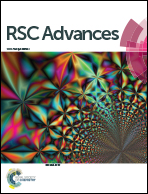Adsorption of polygalacturonic acid on crosslinked polystyrene spheres with cationic polyelectrolyte
Abstract
In a papermaking system, severe drawbacks on machine runnability and paper quality occur due to a build-up of dissolved and colloidal substances (DCS) in the whitewater. The adsorption of DCS on solid sorbents is proposed to remove DCS from the whitewater. Polystyrene (PS) spheres with poly(methacryloxyethyltrimethyl ammonium chloride) (poly-MAC) were prepared as adsorbents for the removal of polygalacturonic acid (PGA) from aqueous solution. Characterization of these particles was carried out using Fourier transform infrared spectroscopy, 13C NMR, scanning electron microscopy, particle size analyzer, surface area apparatus and elemental analyzer. The results indicate that the cationic polyelectrolyte was grafted onto the surface of PS spheres. The maximum adsorption capacity of the cationic PS spheres for PGA was found to be 123.07 mg g−1. Adsorption of PGA on the these sorbents all fitted to the Langmuir model and followed pseudo-first-order kinetics. Adsorption capacity of PGA on the cationic PS spheres was higher than on IRA-67 (alkaline ion exchange resin). In the removal contaminants from whitewater using the adsorption method, it is a promising route to graft functional polymers on the solid matrixes, resulting in high performance.


 Please wait while we load your content...
Please wait while we load your content...